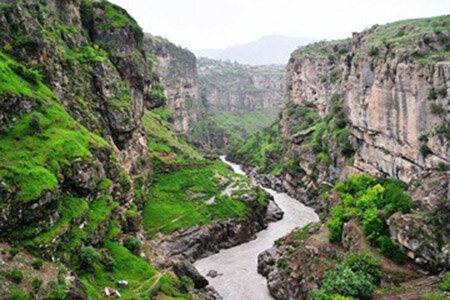Holeylan Valley, historical passage of tool-making humans from 100,000 years ago

TEHRAN-Archaeological studies show that tool-making humans lived in the Holeylan Valley in Ilam province for about 100,000 years and after going through the initial stages, have achieved irrigated agriculture and livestock domestication.
Habibollah Mahmoudian, a specialist in prehistoric archaeology, told ISNA that the western part of the Ilam Plateau is of particular importance from the perspective of historical and archaeological studies due to its location in the fertile Zagros region, its water resources, pasture and forest cover, and its location on the connecting route between the Central Asian Plateau and Mesopotamia and other regions of West Asia.
He noted that according to archaeological reports, the settlement of the population and human life in this geographical area has continued at least since the Paleolithic era until today. The passage of ancient roads such as Silk Road in the north of the province, which was considered the main trade route of the East, and the Royal Road that connected Susa to Asia Minor, along with the existence of the most densely populated ancient bridges on the Seymareh River and its branches in the provinces of Ilam,
Lorestan, and Khuzestan, indicates the communication role of this region in different historical periods, he added. Mahmoudian continued that studying the cultural developments of this region of Iran is very valuable for understanding its historical identity.
Holeylan Valley, which is considered the northernmost part of the Sirvan and Chardavel counties, is located on the west bank of the Seymareh River and has an important place from an archaeological perspective.
Artifacts such as stone axes and other stone tools that evolved with the advancement of production and distribution methods have been discovered in this region, he pointed out.
He explained that after going through the initial period of settlement and familiarity with agriculture, the inhabitants of Holeylan approached the stage of irrigated agriculture and domesticated cattle, sheep, goats, and horses. The discovery of countless examples of stone blades and cultural tools from the Stone Age is evidence of the increasing cultural growth and development of the monoculture settlement system in the villages and urbanization of this region, he added.
Mahmoudian recalled that Holeylan Valley was first explored by British Archaeologist Sir Aurel Stein in 1936. He identified ancient hills and excavated them. His goal in this excavation was to discover artifacts from the Bronze Age in Lorestan.
He emphasized that Danish archaeological expedition led by Peder Mortensen resumed its activities in Lorestan in 1973. Given the slight morphological changes in northern Lorestan during the Pleistocene period, there was a possibility of finding sites that could explain the patterns of early human settlement. Therefore, studies began to focus on the Holeylan Valley, which is one of the best water valleys in the general region of Lorestan.
The archaeologist added: Mortensen conducted two extensive study seasons in Spring of 1973 and Fall of 1974. During these two seasons, 161 sites were discovered and recorded in an area of ??140 square kilometers, he said. Only 16 sites from this complex had been previously identified by Aurel Stein and other archaeologists, he added.
KD
Leave a Comment